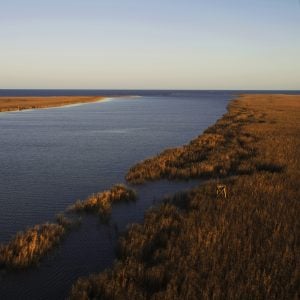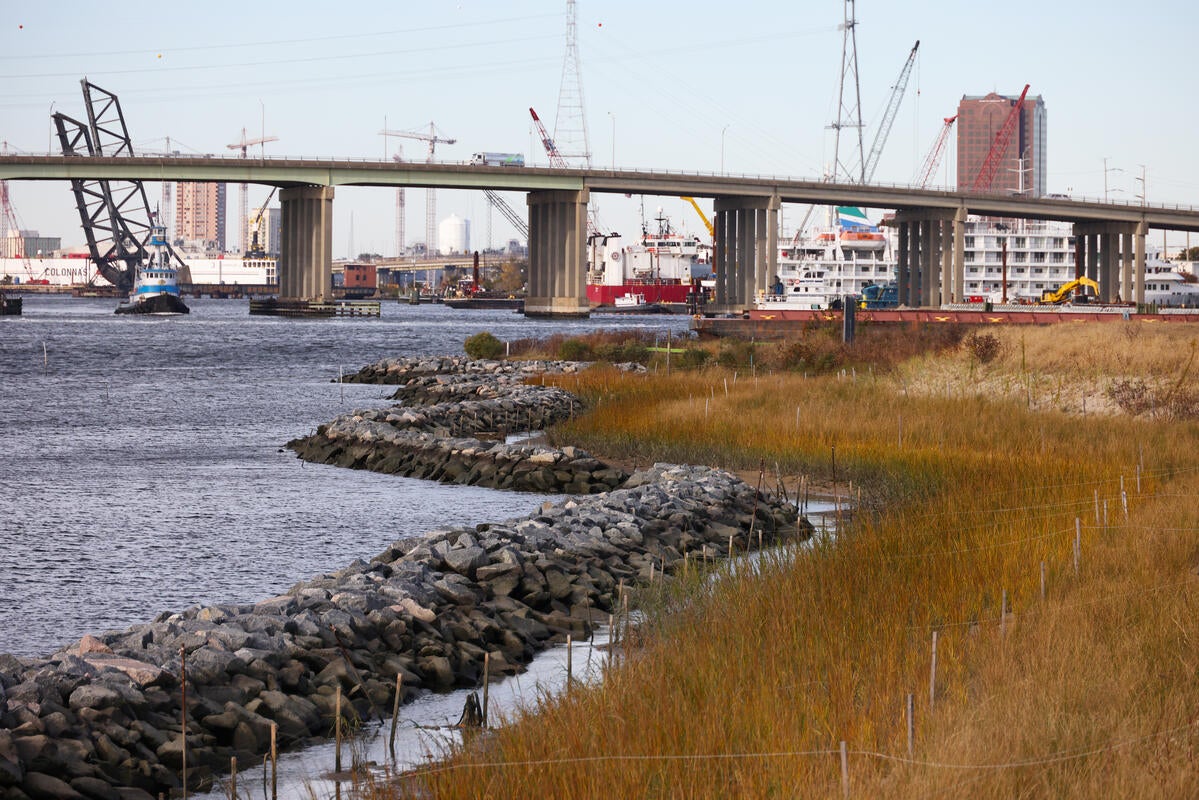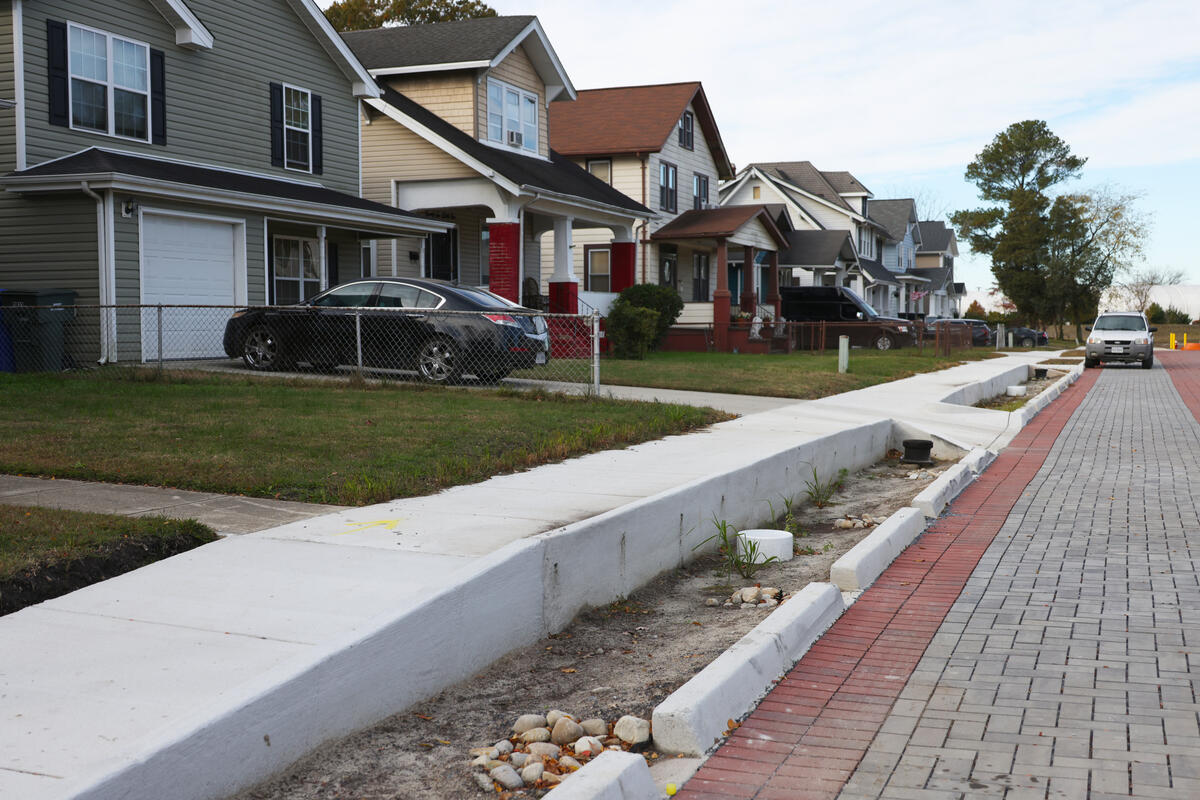
How new provisions in the Water Resources Development Act are building climate resilience
The Water Resources Development Act of 2022 (WRDA 2022) passed through Congress last December as part of the James M. Inhofe National Defense Authorization Act. This typically biennial and bipartisan legislation invests in water infrastructure by authorizing projects, studies and programs led by the U.S. Army Corps of Engineers (USACE). Across the country, the new legislation allows USACE to play a critical role in protecting, enhancing and restoring coastal and riverine areas from climate-impacted flooding and storms.
While there are many notable provisions in WRDA 2022, EDF, along with other national and regional nonprofit partners like Restore the Mississippi River Delta, are especially excited about the inclusion of provisions we advocated for in recent years. As a result, USACE is now able to invest and effectively address four key components that will maximize coastal resilience:
Building resilience in communities and ecosystems along the Mississippi River
WRDA 2022 included hard-won language for restoration of the Mississippi River Gulf-Outlet (MRGO), as detailed in the Ecosystem Restoration Plan to be completed at full federal expense (Sec. 8341). This comprehensive plan aims to restore and conserve marsh ecosystems, habitats and communities devastated by harmful impacts from the MRGO channel. It is critical for protecting New Orleans, particularly the Lower Ninth Ward, New Orleans East and St. Bernard Parish, from devastating hurricane impacts and restoring critical wetland habitat in Southeast Louisiana.
In addition to restoring the MRGO, the Lower Mississippi River Comprehensive Management Study will also be completed at full federal expense (Sec. 8343). This study allows USACE to identify opportunities that enhance and transform river management in states that make up the lower Mississippi River basin, ultimately improving river management and developing synergy among ecosystem restoration, storm protection, community resilience and river-dependent commerce.
Addressing multiple flood risks
Additionally, WRDA 2022 included a provision on comprehensive flood risk (Sec. 8106), requiring that all risks be considered when planning flood and storm damage reduction projects. Risks include river discharges, wind, waves, tides and rain events.
Integrating multiple flood threats allows USACE to better align with the specific needs of the counties, cities and states they partner with and ensure current and future risks are being addressed.
Prioritizing environmental justice
Other critical provisions provide resources and consultation with Tribes and other indigenous peoples, communities of color and economically disadvantaged communities. This allows USACE to better address systemic inequalities built into the policies and programs that govern our coastal and riverine systems.
Furthermore, the extension and expansion of the Tribal Partnership program (Sec. 8111), establishment of Tribal and Economically Disadvantaged Communities Advisory Committee (Sec. 8115) and requirement of Tribal liaisons for each USACE district (Sec. 8112), will assist communities in obtaining equitable solutions for their water resources challenges.
Implementing coastal resilience strategies
Following these provisions, EDF partnered with other environmental NGOs to submit implementation guidance in March 2023.
We encouraged USACE to advance both the MRGO Ecosystem Restoration Plan and the Lower Mississippi River Comprehensive Management Study without undue delay, as the longstanding cost-share obstacles for both projects were resolved in WRDA 2022. Additionally, we recommended USACE incorporate community voices with active and meaningful engagement by consulting with low-income communities, communities of color, and Tribes and indigenous peoples.
We also urged USACE to revise regulations, specify language, provide a clear protocol and increase transparency with localities and the public when carrying out provisions on comprehensive flood risk. Lastly, it is essential that USACE acts expeditiously to form the Tribal and Economically Disadvantaged Communities Advisory Committee, ensuring that existing funds will be used to establish it.
These provisions come on the heels of unprecedented investments in climate resilience made under the Biden administration. Funding comes as a result of the Bipartisan Infrastructure Law (BIL) and the Inflation Reduction Act (IRA), and historic new guidance under the President’s Executive Order 14072, enlisting nature to address the climate crisis.
With a focus on restoration and conservation to build resilience, these WRDA 2022 provisions provide an opportunity for federal agencies to prioritize nature-based solutions. In this promising context, we are now taking steps to implement the WRDA 2022 language in order to build a flood and storm resilient future for the communities who live, work and play around our nation’s coastlines, rivers and waterbodies.












